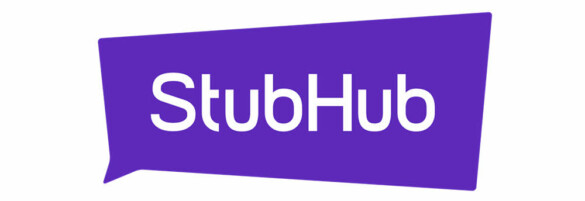StubHub, the online ticket resale giant, is once again preparing to go public after a months-long pause in its initial public offering (IPO) process. The company, which first filed a public S-1 registration with the U.S. Securities and Exchange Commission (SEC) in late March 2025, put its plans on hold in April amid heightened market uncertainty caused by new U.S. tariffs under the Trump administration.
On Monday, StubHub filed an updated S-1, this time including its financial results for the first quarter of 2025 — a move widely seen as a sign that the IPO is back on track. Industry observers say the revised filing suggests that the company could make its market debut as early as next month.
IPO research firm Renaissance Capital, which tracks new listings, had previously estimated in March that StubHub’s offering could raise up to $1 billion.
While the company has yet to confirm a specific date or valuation target, Renaissance noted that this updated filing is a strong indicator of momentum returning to its public debut plans. StubHub declined to comment on the IPO’s status, citing SEC quiet-period restrictions that limit public communications ahead of a stock offering.
Financial Performance and Shareholder Structure
In 2024, StubHub generated nearly $1.8 billion in revenue — a solid figure reflecting the global demand for live events after pandemic-era shutdowns. However, the company reported a modest net loss of $2.8 million, signaling that while demand has rebounded, costs remain high in the competitive ticket resale space.
The company’s shareholder structure reveals a concentration of ownership among a few major investors. Madrone Partners, an investment firm associated with the Walton family of Walmart fame, is the largest stakeholder with a 27.1% share. WestCap Management, led by former Airbnb executive Laurence Tosi, holds 10.8%, while venture capital firm Bessemer Partners owns 9.6%.
StubHub founder and CEO Eric Baker, who originally co-founded the company in 2000 before leaving and later returning, owns just 5.2% of Class A shares. However, Baker retains tight control over the company thanks to his exclusive ownership of 4.95 million Class B shares, which carry super-voting rights. This dual-class structure gives him 90% of the company’s voting power, ensuring that he will continue to steer StubHub’s strategic direction even after it becomes a publicly traded entity.
From Startup to Global Ticket Marketplace
Founded in San Francisco, StubHub began as an early pioneer in creating a secure, consumer-friendly secondary market for event tickets. At a time when scalping and ticket fraud plagued sports, concert, and theater fans, the company offered a platform that guaranteed tickets, provided clear pricing, and facilitated transactions between sellers and buyers.
The company grew rapidly in the 2000s, benefiting from the rise of e-commerce and changing attitudes toward the legitimacy of ticket resale. StubHub’s breakthrough came in 2007, when eBay acquired it for $310 million. Under eBay’s ownership, the platform expanded internationally, striking partnerships with major sports leagues, teams, and event organizers to become the official resale partner for high-profile events.
In 2020, just before the COVID-19 pandemic decimated the live events industry, Viagogo — another ticket resale giant founded by Baker — acquired StubHub from eBay for $4.05 billion. The pandemic forced StubHub to refund millions of dollars in ticket purchases, creating significant financial strain. The company restructured its operations, leaned into virtual event offerings during lockdowns, and later capitalized on the post-pandemic surge in live entertainment demand.
Today, StubHub operates in more than 90 countries, providing tickets to concerts, sporting events, theater performances, and festivals. Its platform uses dynamic pricing, data analytics, and partnerships with major sports franchises to maintain a competitive edge in the resale market.
Market Context and Competitive Landscape
StubHub’s return to IPO plans comes at a time when the live events industry is experiencing robust demand but also facing challenges. After the pandemic, ticket prices for high-profile events have surged due to inflation, limited supply, and the growing popularity of “dynamic pricing” models used by primary sellers such as Ticketmaster. These trends have been both a blessing and a curse for resale platforms.
On the one hand, higher demand and scarcity for in-demand events boost resale values and transaction volumes. On the other, public scrutiny over ticket pricing — including investigations into alleged anti-competitive practices in the industry — has increased political and consumer pressure on the sector.
StubHub competes primarily with Ticketmaster’s resale division, SeatGeek, and Vivid Seats. While Ticketmaster remains dominant in primary sales, StubHub’s brand recognition, global reach, and long-standing reputation for secure transactions give it a strong position in the secondary market.
The IPO Pause and Market Volatility
The decision to pause its IPO in April was a strategic one. The Trump administration’s new round of tariffs earlier this year rattled financial markets, prompting many companies to hold off on public offerings amid fears of higher inflation, slower economic growth, and uncertainty in global trade flows.
Market analysts note that IPOs thrive in periods of economic stability and investor confidence. With U.S. tariffs sparking volatility, many high-profile IPO candidates either delayed filings or pushed back listing dates to avoid weak pricing or underwhelming debuts.
By filing an updated S-1 in August, StubHub appears confident that market conditions are improving — or at least stabilizing enough to test investor appetite for growth-oriented consumer internet companies.
Why StubHub’s IPO Matters
A $1 billion IPO would be one of the largest consumer tech listings of 2025 and a significant moment for the post-pandemic live entertainment economy. For investors, StubHub offers a play on the continued demand for experiences — from stadium concerts to playoff games — that are less vulnerable to digital substitution than other forms of entertainment.
The IPO would also give StubHub fresh capital to invest in technology, international expansion, and strategic partnerships. This could include improved mobile experiences, more sophisticated fraud detection tools, and enhanced integrations with primary ticket sellers to further legitimize and streamline the resale process.
Risks and Investor Considerations
While StubHub’s brand is strong, its business faces risks. Ticket resale is sensitive to economic downturns, as consumers often cut discretionary spending on entertainment when finances tighten. Political and regulatory scrutiny over ticket pricing practices could also impact the resale market.
Additionally, the competitive landscape is fierce. Ticketmaster, SeatGeek, and Vivid Seats all invest heavily in user experience, partnerships, and marketing. Maintaining market share will require StubHub to continue innovating in pricing, personalization, and customer service.
There is also the matter of governance. Dual-class share structures like StubHub’s can be controversial among institutional investors because they give disproportionate control to founders or early investors. While Eric Baker’s leadership is central to StubHub’s identity, some investors may be cautious about the concentration of voting power in one individual.
Looking Ahead
If StubHub proceeds with a September IPO, it will test the market’s appetite for consumer-facing growth companies amid an environment of cautious optimism. The offering could serve as a bellwether for other companies in the live entertainment and consumer tech sectors considering a public debut in the coming quarters.
Given its brand recognition, global footprint, and role as a leading player in the ticket resale market, StubHub’s IPO is likely to attract significant investor attention. Whether the debut meets — or exceeds — the anticipated $1 billion raise will depend on market sentiment, pricing strategy, and the company’s ability to articulate a clear path to profitability in the years ahead.
For now, the updated S-1 marks an important step in bringing StubHub back to Wall Street, signaling that the company sees favorable conditions on the horizon for one of the year’s most closely watched public offerings.



